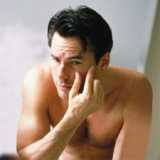
How To Get Rid Of Acne In Men's Skin
Cleansing the face
Use a gentle water-soluble cleanser. One of the most common mistakes men make when it comes to skincare for curing acne is that a cooling or tingling feeling means that a product is “working”. This couldn’t be further from the truth. That feeling is actually skin irritation. Those products that produce that feeling can actually hurt the skin's healing process, make scarring worse, and encourage the bacteria that cause acne pimples. Using soaps, bar cleansers or cleansers that contain pore-clogging ingredients can also make matters worse. The important primary step is to finding a gentle, water-soluble cleanser.
Exfoliating
Use a 1% to 2% beta hydroxy acid (BHA) product or an 8% alpha hydroxy acid (AHA) product to exfoliate the skin. As a thumb of rule, BHA is preferred over AHA for curing all kinds of acne breakouts, including blackheads because of its ability to cut through the oil inside the pore. Penetrating the pore is essential to exfoliate the pore lining. Besides that, BHA does have antibacterial effect to kill the bacteria that causes acne, as well as anti-inflammatory benefits. As BHA is related to aspirin, for those men who are allergic to aspirin, an AHA is the next option to consider. A topical scrub can be used as a mechanical exfoliant and can be helpful for those who want to remove dead skin cells. However, this does not in any way take the place of an effective BHA, AHA, or topical prescription treatment. Be careful never to over-scrub when using a mechanical scrub as too much abrasion can disrupt the skin’s ability to heal.
Topical Disinfecting
The most effective over-the-counter choice for a topical disinfectant to cure acne blemishes is considered to be benzoyl peroxide. The amount of research showing the effectiveness of benzoyl peroxide is exhaustive and conclusive. Among benzoyl peroxide's qualities is its ability to penetrate into the hair follicle to reach the problem-causing bacteria and kill it with a low risk of irritation to the skin. Furthermore, it doesn't pose the problem of bacterial resistance that some prescription topical antibacterials or antibiotics do. Other but limited options for disinfecting the skin are alcohol and sulfur. However, they are too drying and irritating and that can make matters worse for skin and hurt it's ability to heal. Tea tree oil has some interesting research showing it to be an effective disinfectant. A medical research compared the efficacy of 5% tea tree oil to that of 5% benzoyl peroxide for the treatment of acne. The conclusion was that "both treatments were effective in reducing the number of inflamed lesions throughout the trial, with a significantly better result for benzoyl peroxide when compared to the tea tree oil. Skin oiliness was lessened significantly in the benzoyl peroxide group versus the tea tree oil group." Unfortunately, most products on the market contain little more than a 1% concentration of tea tree oil, not the 5% strength used in the study. For some men, a topical disinfectant may be sufficient. However, using a topical antibacterial and an exfoliant is a powerful combination in winning the battle against blemishes. Cleaning the skin without both exfoliating and disinfecting is less likely to have an impact on blemishes. You can get fairly good results using one or the other, but together they are an impressive defense against blemishes.
Absorbing Excess Oil
This is perhaps one of the most difficult skin care problems to manage. There is nothing you can apply topically to prevent more oil production because it is only caused by hormones. What you can do is not make matters worse by not using products that contain oils or are emollient. To absorb oil, clay mask can help a lot and only use those that do not contain irritating ingredients. Another option is liquid magnesium hydroxide, which does a very good job of absorbing oil. The frequency of you using a mask depends on your skin type, which ranges from daily application to once a week.
Following these steps cab get you on your way to getting rid of acne.
Next update: Medical option for getting rid of acne blemishes.




No comments:
Post a Comment